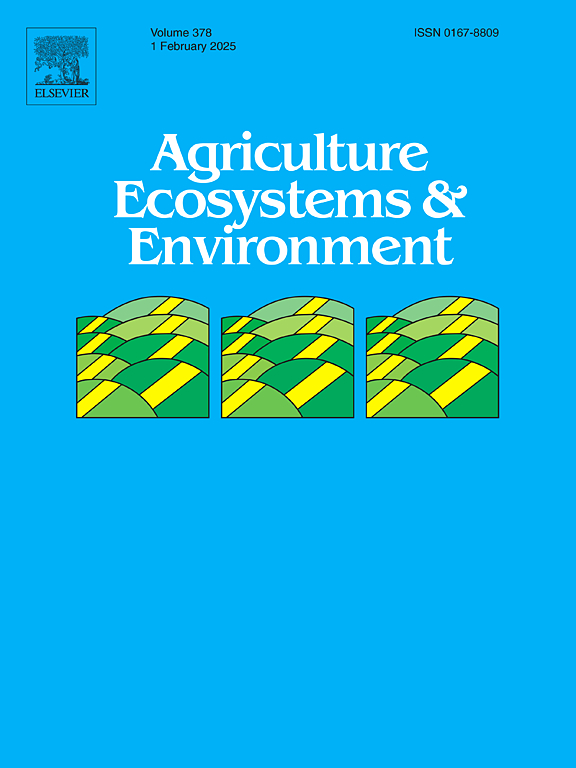Grazing beef cattle vegetation preferences and their effects on fitness
IF 6
1区 农林科学
Q1 AGRICULTURE, MULTIDISCIPLINARY
引用次数: 0
Abstract
Grazing pressure and land cover change are impacting ecosystems functioning worldwide. Cattle grazing can be actively managed to optimize both pasture and animal production, however, knowledge about foraging preferences and aversions to pasture attributes and plant-forager feedback is required. Previous studies elucidated a wide range of parameters affecting selection, most of them region specific. This study aimed to explore foraging selections according to plant communities and their effects on the grazing cattle’s fitness. We defined six vegetation categories, based on widely applicable characteristics, comprising an ensemble of attracting and deterring properties. We used both remote sensing-based classification and chemistry analyses. The defined groups were: ‘Dense bush’, ‘edible dry grass’, ‘edible green grass’ ‘sparse-vegetation’, ‘Thistles’ and ‘Edible trees’. GPS location data were recorded for 42 lactating beef cows, their locations in each category were used to calculate herd preference, its temporal change, individual variation in preference and its effect on fitness. We used conception result within the study period as a fitness proxy. Herd location choice expressed preference to three categories (edible green grass, sparse-vegetation and thistles) and aversion to three categories (dense bush, edible dry grass and trees). These preferences showed temporal dynamics reflected in decreased preference for ‘edible green’ and ‘edible dry’ grasses; increased preference for ‘dense bush’ and ‘trees’ from the beginning to the end of the study period. The categories ‘sparse-vegetation’ and ‘thistles’ were consistently preferred. Thistles establishment was as a long-term response to over-grazing, and its consistent preference may suggest potential for recovery of disrupted rangelands. On the individual scale, the categories composition of the individual diets was not a differentiating factor in fitness result. The two consistently preferred categories, showed a significant effect on fitness. ‘Thistles’ was fitness beneficial and ‘sparse-vegetation’ was fitness detrimental. To explore the preference for ‘sparse-vegetation’ despite its detrimental effect on fitness, we investigated combinations of other categories potentially mitigating ‘sparse-vegetation’ adverse effect. We found that a diurnal joint foraging of ‘dense bush’ and ‘sparse-vegetation’ mitigated the detrimental effect of the latter on fitness. We suggest that this beneficial effect is supported by the superior nutritive properties of ‘dense bush’. The role of its secondary metabolites calls for further investigation. We conclude that considering the effects on fitness and our synthetic classification method’s wide applicability, ranchers may adopt management considering both cattle’s preferences and grazing impacts on the environment.
求助全文
约1分钟内获得全文
求助全文
来源期刊

Agriculture, Ecosystems & Environment
环境科学-环境科学
CiteScore
11.70
自引率
9.10%
发文量
392
审稿时长
26 days
期刊介绍:
Agriculture, Ecosystems and Environment publishes scientific articles dealing with the interface between agroecosystems and the natural environment, specifically how agriculture influences the environment and how changes in that environment impact agroecosystems. Preference is given to papers from experimental and observational research at the field, system or landscape level, from studies that enhance our understanding of processes using data-based biophysical modelling, and papers that bridge scientific disciplines and integrate knowledge. All papers should be placed in an international or wide comparative context.
 求助内容:
求助内容: 应助结果提醒方式:
应助结果提醒方式:


